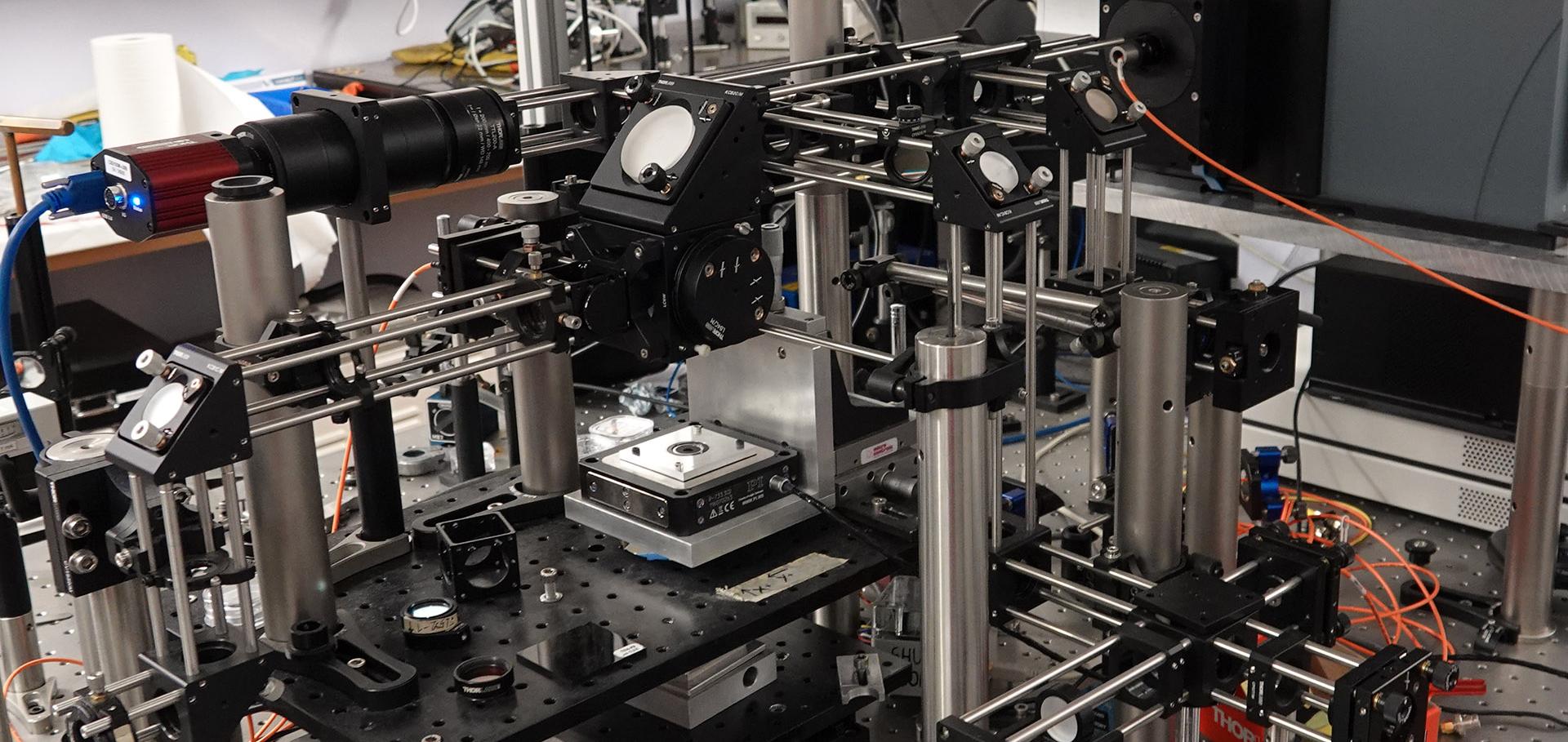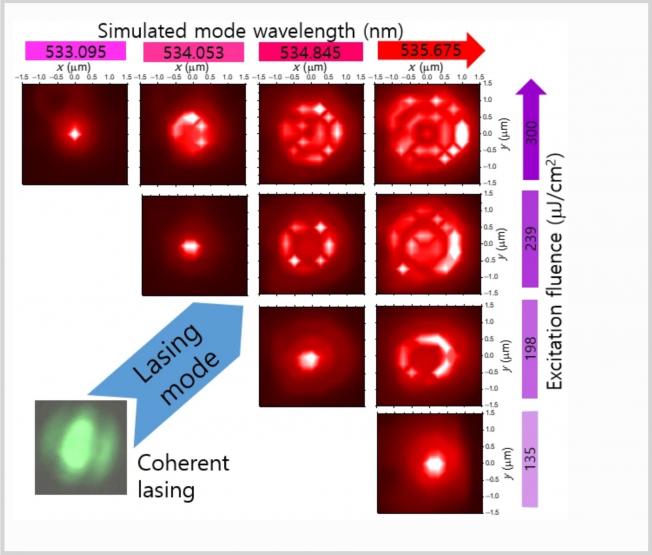Ultrastable Perovskite Encased in a Helical Cage for Tunable Full‐Color Mirror‐Image Circularly Polarized Luminescence
Advanced Functional Materials Wiley (2025) e14790
Abstract:
Achieving stable and efficient circularly polarized luminescence (CPL) from achiral perovskite nanocrystals (PNCs) remains a major challenge in the development of advanced chiroptical materials. Herein, the syntheses of a total of nine compounds, including full‐color colloidal polymer‐capped PNC composites are reported based on organic‐inorganic hybrid perovskites and inorganic 2D nanosheets (NSs) using phenacyl halide as a single organic source of halide precursor. While the initial PNCs exhibit low photoluminescence quantum yield (PL QY) and poor stability, a previously unexplored surface absorption/ion exchange strategy employing 2D‐ZrH2P2O8 NSs significantly enhances both optical properties and long‐term stability, e.g., the FAPbBr3@ZrH2P2O8 (FA = formamidinium) composite exhibits a significantly enhanced PL QY of 88.57%, compared to 30.9% for the pristine counterparts, owing to the protective effect of the robust 2D ZrH2P2O8 network that enhances stability under ambient conditions. Crucially, embedding these stabilized PNCs into a chiral polymer matrix induces distinct mirror‐image strong CPL signals both in solution and solid‐state. This rare dual‐phase CPL activity arises from the conformational adaptability of the chiral polymer, which imparts chirality to the achiral PNCs via both covalent and non‐covalent interactions. These findings present a versatile strategy for producing robust, CPL‐active stable perovskite materials across the visible spectrum for next‐generation chiroptoelectronic devices.Toward α‑CsPbI3 Quantum Dots via Dual-Functional Fluorinated Acidic Ligand
ACS Energy Letters American Chemical Society (ACS) (2025) 4402-4409
Abstract:
Weakly bonded native ligands severely degrade the performance of perovskite quantum dot (PeQD) light-emitting diodes (LEDs). While conventional approaches can be used to strengthen ligand binding, they fail to achieve complete ligand exchange, leaving residual ligands that promote degradation. Herein, we present a dual-functional fluorinated benzyl phosphonic acid (F-BPA) ligand that modulates the acidity and enhances the binding affinity between the phosphonate groups of F-BPA and the perovskite surface compared to BPA due to a significant redistribution of the electrostatic potential of the molecule induced by fluorination. The F-BPA treatment facilitates effective ligand exchange and obtains well-passivated CsPbI3 PeQDs with improved stability under thermal, light, and polar solvent stress. Red-emissive LEDs achieved a maximum external quantum efficiency of 24.0% with improved device stability (half-lifetime of 1,020 min at 100 cd m–2). This study demonstrates a dual-functional ligand strategy and opens a new pathway toward PeQDs for next-generation display technologies.Van der Waals Integration of 1D Nb 2 Pd 3 Se 8 and 2D WSe 2 for Gate‐Tunable In‐Sensor Image Processing
Advanced Materials Wiley (2025) e00011
Abstract:
1D and 2D integrations provide significant promise for machine vision by enabling compact, power‐efficient optoelectronic devices. However, the potential of 1D materials in mixed‐dimensional structures for convolutional image processing remains largely unexplored. Here, high‐quality 1D‐Nb2Pd3Se8 is synthesized and integrated with 2D‐WSe2 to form self‐powered photodetectors, exhibiting gate‐tunable bi‐directional photoresponse for image processing. Utilizing the narrow band gap and favorable work function of 1D‐Nb2Pd3Se8, a type‐I junction and 1D van der Waals interface are established with transition metal dichalcogenides. The gate tunable built‐in electric field enables switching between n‐p and n‐n+ configurations, allowing the drift photocurrent direction to be reversed, achieving both negative and positive photocurrent. Furthermore, efficient conversion of high‐energy photons along one dimension enhances sensitivity at 375 nm. The device achieves a responsivity of 232 mA W−1, external quantum efficiency of 77% at 375 nm illumination, rapid response time of ~3 µs, detectivity of 6.35 × 1010 Jones, and broadband photodetection from ultraviolet to near‐infrared. The demonstrated gate‐controllable, bi‐directional photoresponse with linear power dependence in a 1D heterojunction offers a promising platform for in‐sensor convolutional processing with high integration and portability.Magnetoelastic Dynamics of the Spin Jahn-Teller Transition in CoTi2O5
Physical Review Letters American Physical Society (APS) 134:25 (2025) 256702
Abstract:
has the paradox that low temperature static magnetic order is incompatible with the crystal structure owing to a mirror plane that exactly frustrates magnetic interactions. Despite no observable structural distortion with diffraction, does magnetically order below with the breaking of spin ground state degeneracy proposed to be a realization of the spin Jahn-Teller effect in analogy to the celebrated orbital Jahn-Teller transition. We apply neutron and Raman spectroscopy to study the dynamics of this transition in . We find anomalous acoustics associated with a symmetry breaking strain that characterizes the spin Jahn-Teller transition. Crucially, the energy of this phonon coincides with the energy scale of the magnetic excitations, and has the same symmetry of an optic mode, observed with Raman spectroscopy, which atypically softens in energy with decreasing temperature. Taken together, we propose that the energetics of the spin Jahn-Teller effect in are related to cooperative magnetoelastic fluctuations as opposed to conventional soft critical dynamics which typically drive large measurable static displacements. Published by the American Physical Society 2025Magnetoelastic dynamics of the "spin Jahn-Teller" transition in CoTi$_{2}$O$_{5}$
(2025)



